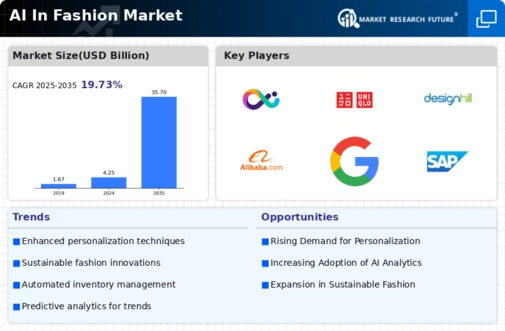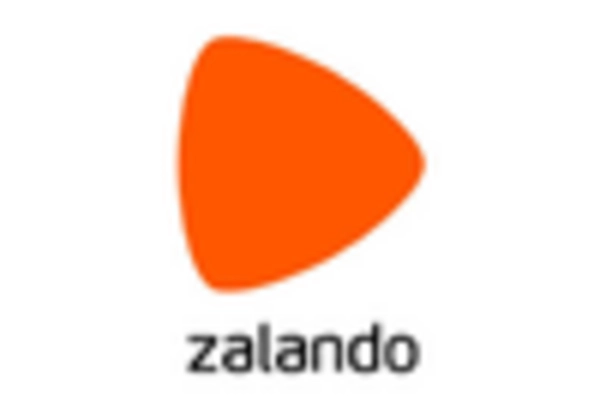Virtual Shopping Experiences
The AI In Fashion Market is embracing virtual shopping experiences, where AI technologies enhance online retail through virtual try-ons and personalized recommendations. These innovations allow consumers to visualize products in real-time, significantly improving the online shopping experience. Reports indicate that brands offering virtual try-on features have seen a 25 percent increase in conversion rates. As consumers increasingly prefer online shopping, the demand for immersive and interactive experiences is likely to grow. The integration of AI in creating these virtual environments will be a key driver in shaping the future of the AI In Fashion Market.
Data-Driven Consumer Insights
In the AI In Fashion Market, the utilization of data analytics is becoming paramount for understanding consumer behavior. AI tools can process consumer data from various sources, including social media, online shopping patterns, and customer feedback. This analysis provides brands with actionable insights into trends and preferences, allowing for more targeted marketing strategies. Reports indicate that brands leveraging AI for consumer insights have seen an increase in customer engagement by approximately 20 percent. As the demand for personalized shopping experiences grows, the ability to harness data effectively will be a critical driver for success in the AI In Fashion Market.
Automation of Design Processes
The AI In Fashion Market is witnessing a shift towards automation in design processes, where AI tools assist designers in creating innovative collections. By analyzing current trends and consumer preferences, AI can generate design suggestions, fabric choices, and color palettes, thereby expediting the creative process. This not only enhances productivity but also allows designers to focus on more complex creative tasks. Some fashion houses have reported a 40 percent reduction in design time due to AI integration. As automation becomes more prevalent, the AI In Fashion Market is likely to evolve, fostering a new era of creativity and efficiency.
Enhanced Supply Chain Efficiency
The AI In Fashion Market is experiencing a transformation in supply chain management through the integration of artificial intelligence technologies. AI algorithms analyze vast amounts of data to optimize inventory levels, predict demand, and streamline logistics. This efficiency not only reduces operational costs but also enhances responsiveness to market trends. For instance, companies utilizing AI-driven analytics have reported a reduction in excess inventory by up to 30 percent, thereby improving profitability. As fashion brands increasingly adopt these technologies, the AI In Fashion Market is likely to witness a surge in operational efficiency, enabling brands to respond swiftly to consumer preferences and market fluctuations.
Sustainability and Ethical Practices
Sustainability is increasingly becoming a focal point in the AI In Fashion Market, with AI technologies playing a crucial role in promoting ethical practices. AI can optimize resource usage, reduce waste, and enhance recycling processes, aligning with the growing consumer demand for sustainable fashion. Brands that implement AI-driven sustainability initiatives are likely to attract environmentally conscious consumers, potentially increasing their market share. Studies suggest that sustainable fashion brands can achieve a 15 percent higher customer loyalty rate. As the industry shifts towards more responsible practices, the integration of AI will be essential in driving sustainability efforts within the AI In Fashion Market.


















Leave a Comment